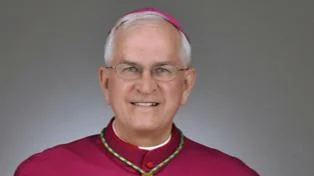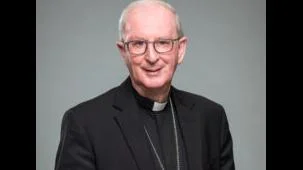
Bishop John Noonan | Diocese of Orland website
The Nicene Creed, established in 325 A.D., continues to be a central element of Christian faith, but its impact is complex. As the 1,700th anniversary approaches, Pope Leo XIV is preparing for a visit to Turkey this November. Members of both Eastern and Western Christian traditions within the Diocese of Orlando are considering what this milestone means for unity and tradition.
The Council of Nicea was convened to address confusion about Christ’s divinity, particularly the Arian heresy that questioned Jesus’ divine nature. The resulting Creed affirmed the equality of God the Father and God the Son. While the council also attempted to unify the date for Easter between East and West, using different calendars made consensus difficult.
This year’s simultaneous celebration of Easter by both traditions has renewed interest in unifying practices. Pope Leo XIV has emphasized efforts toward bringing Eastern and Western churches closer together.
Father Matthew Hawkins, pastor at Annunciation Parish in Altamonte Springs, recently led a study on “The Creed.” He explained his aim was to “bring parishioners into a relationship with Jesus Christ; to come to know the God who made us, who is professed in the Creed,” while commemorating Church history. He added: “These are our doctrines that were developed over the centuries following the Apostles, and to recognize that it wasn’t all written down in stone from the very beginning, but there was a development in the Church that continues today. The Church in which we are still members.”
Having grown up Antiochian Orthodox, Father Hawkins said he tried to help his parish appreciate another expression of faith: “St. John Paul II often talks about ‘the two lungs.’ They’re not meant to be one and the same, blanketing over the differences, but that each of the differences complement each other and build up a much stronger, much more beautiful and expressive church.” He noted further: “The West has gifts that need to be brought to full fruition, and the East does as well. As in any marriage…each brings their gift so the whole is greater than the sum of its parts.”
Father John Hamatie from St. George Antiochian Orthodox Church echoed these views on mutual enrichment: “The Roman Church is in great need of spirituality of Orthodox Church,” citing mysticism as an area where Orthodoxy can offer something unique while recognizing organizational strengths within Catholicism. He stated: “I think overall people are just finally realizing emptiness of secular society…they’re looking for something deeper.” Father Hamatie agrees with Pope Leo’s view that “what we have in common is stronger…than what divides us,” but cautioned that feeling separation may be necessary before reconciliation.
Bishop John Noonan observed challenges posed by different mindsets: “The Eastern Rite is very mystic. The Roman Rite is very concrete,” he said. Bishop Noonan acknowledged Vatican II helped foster recognition between traditions but admitted moving forward remains difficult due to attachment to tradition.
He remarked on historical disagreements even among early Jews as evidence that unity is complex: “Theologically I think we can come together…but spiritually…I don’t know.”
Father Roman Kuzminskyi from St. Mary Protectress Ukrainian Church expressed hope inspired by Pope Leo’s efforts: “As a priest of Eastern Catholic tradition…I see unity as something deeply desired by Christ Himself…” He believes true unity means harmony rather than uniformity: “…our Church is a witness communion with Rome possible without losing our Eastern spirituality…” He added: "True unity has to be a gift of Holy Spirit," hoping churches can unite while respecting traditions.
Father Kuzminskyi pointed out how close churches are doctrinally but said progress requires humility and openness: "Old wounds...and fear keep us apart...Real unity will need humility...to see each other not as rivals...but as brothers and sisters."
Father Blake Britton from Pontifical John Paul II Institute described evangelization through returning to core beliefs found in Revelation and expressed through reciting Creed together: “…the word ‘creed’ or symbolon…means ‘symbol of faith.’ Because…the Creed is a living event…it means bring together…what binds us together is truth…”
He continued: "It’s rather that when you’re professing Creed…you’re actually manifesting communion itself." Accepting Christ connects believers both with Him and with one another across cultures.
Pope Leo addressed participants at an Ecumenical Symposium marking this anniversary saying: "The Council of Nicea is not merely an event of past but compass must continue guide us towards full visible unity Christians." He expressed hope shared commemoration would help overcome divisions.
For more information about local parishes involved in these discussions or diocesan initiatives surrounding ecumenism or education programs such as those mentioned above visit the Diocese of Orlando. The diocese was founded in 1968 and covers nine counties including Brevard, Lake, Marion, Orange, Osceola, Polk, Seminole, Sumter, and Volusia Counties; it includes 79 parishes under Bishop James Noonan's leadership.





 Alerts Sign-up
Alerts Sign-up